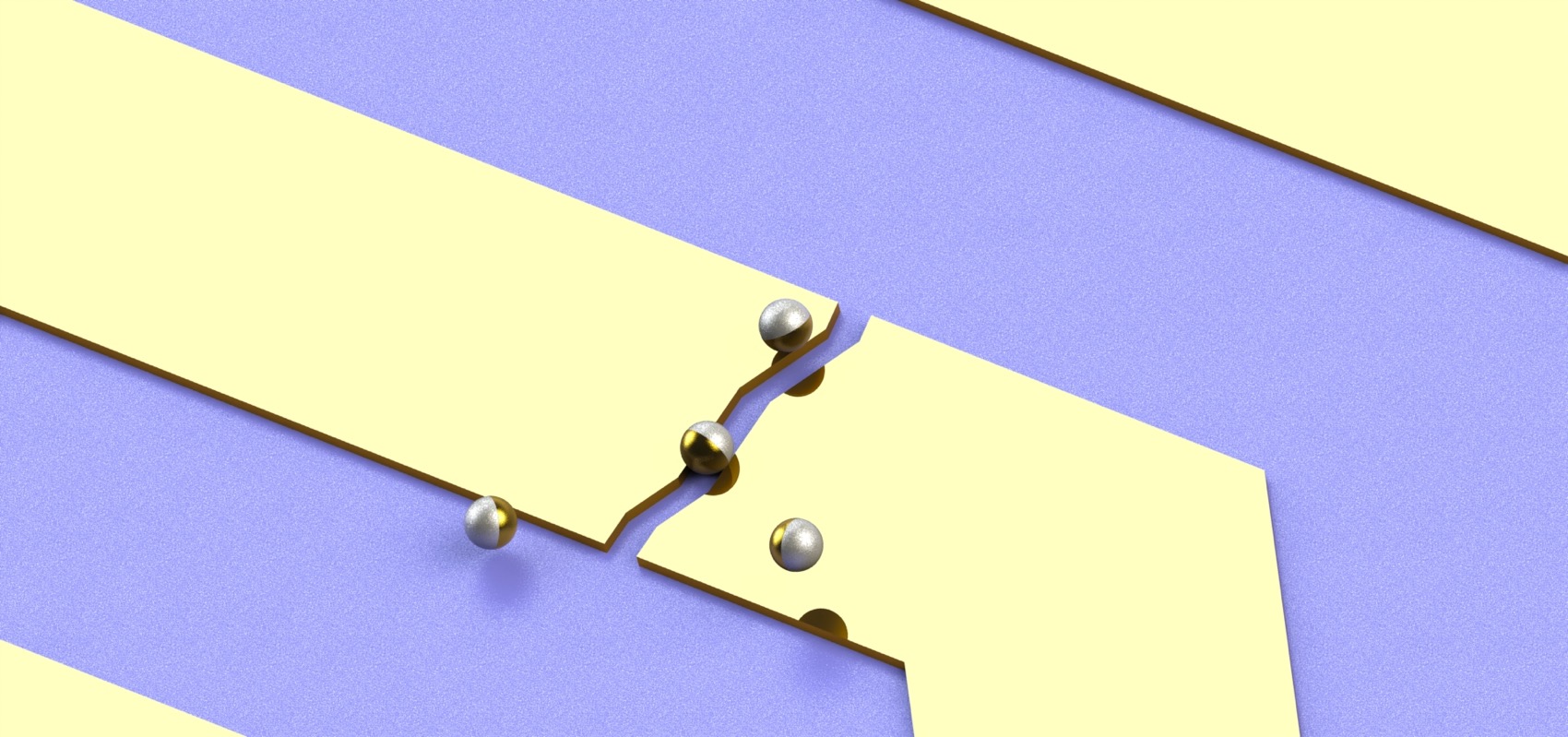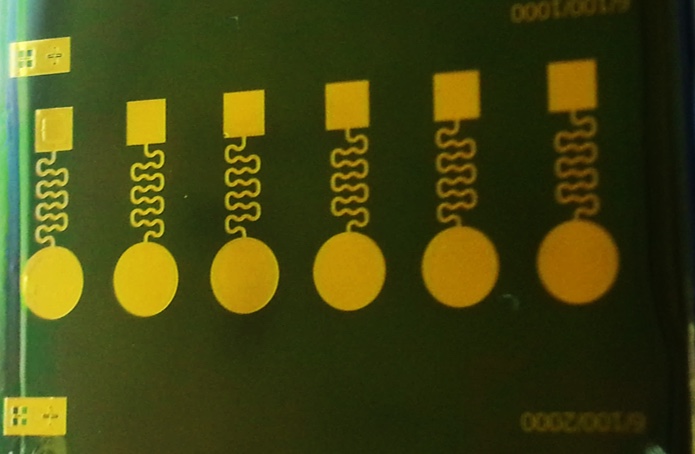
Electronics such as solar panels and flexible gadgets may someday be able to heal their "wounds," thanks to tiny, self-propelled nanoparticles that detect and repair damage.
Microscopic scratches in electrical circuits can interrupt the flow of electricity and seriously impact the performance of devices, but such scrapes are hard to detect and even harder to repair, researchers say.
Now, engineers from the University of California, San Diego (UCSD) and the University of Pittsburgh have designed so-called nanomotors that can autonomously detect and move toward these scratches before wedging themselves into the cracks. [Video: Watch the Nanomotors in Action as They Heal a Scratch]
Because the particles are made from gold and platinum, which conduct electricity, they bridge the gap — healing the wound — and complete the circuit again, according to the researchers. The nanomotors are applied in a liquid solution that also contains the hydrogen peroxide fuel that powers them.
Tiny particles found in the blood of mammals called platelets inspired the design of the system, said the scientists, who presented their research at the 251st National Meeting & Exposition of the American Chemical Society, on Sunday (March 13). These platelets clump together at the site of a wound to form clots that stem bleeding and help the wound heal.
To build the nanomotors, the researchers first created tiny gold spheres and coated one-half of each sphere with platinum, which acts as a catalyst to break down the fuel that propels them. [Top 10 Inventions that Changed the World]
Then, the gold hemispheres were specially modified to take advantage of the hydrophobic effect — the phenomenon that causes oil droplets to separate from water and merge together.
Get the world’s most fascinating discoveries delivered straight to your inbox.
The cracks in electrical circuits are typically hydrophobic, so by making the particles hydrophobic too, the researchers were able to nudge the particles to naturally seek out scratches. The tiny particles are also drawn to other nanomotors, thus allowing them to form clusters that can bridge larger gaps in a circuit.
In the study presented at the meeting, and published last September, lead author Jinxing Li, a doctoral candidate in the UCSD Department of Nanoengineering, and his colleagues described how they had demonstrated that the system could repair a deliberately damaged circuit consisting of a gold electrode, a direct power source and a red LED, within 30 minutes.
According to Li, electronics' ability to self-heal could be particularly useful for solar panels, which are often placed in remote and hostile environments, as well as for future flexible electronics integrated into things like clothes that will experience a lot of mechanical stress.
"These are extremely small nanoscale particles for precision repairing, so they should save a lot of costs compared to using conventional soldering," Li told LiveScience. "The next step is to investigate how to integrate these nanomotors into electronic systems for on-demand activation."
Previous research into self-healing electronics generally has focused on creating self-healing materials that conduct electricity and can become integral parts of a circuit. For instance, Guihua Yu, an assistant professor of mechanical engineering at the University of Texas, and his team created a self-healing, conducting gel designed to act as a soft joint on circuit junctions, where breakages often occur.
"The nanomotors described in this study are more like a repairing tool outside the electronics," Yu told Live Science. "People can use the nanomotors to repair the cracks in circuits just like they use concrete to fix cracks on a wall."
But he said the need to create a designed chemical environment at the site of damage by adding fuel along with the nanomotors could make it challenging to integrate the new technology in electronic s. A fully autonomous self-healing system would need to be able to sense when damage occurs and apply the nanomotors and fuel to the correct area.. "This poses a limitation in terms of how they can be applied to versatile electronic systems, and how they can be easily incorporated into circuits to do the self-healing work," Yu added.
The system relies primarily on materials traditionally used in electronics, and it does not matter how much time has passed since the damage to the circuit occurred, the UCSD researchers said.
The approach could also have applications outside electronics, Li said. In 2013, a group from Pennsylvania State University revealed a similar system that used the ion gradients caused by the minerals released when a bone breaks to power and direct drug-carrying nanoparticles to the site of the crack.
Li said their approach could be used for a similar purpose, and they have already demonstrated that they can power nanomotors using gastric acid, or even water, as fuel.
"The concept demonstrated here could have a profound impact on medicine delivery," Li said. "We would like to develop nanoscale medicine shuttles, which could swim and detect disease sites next. For example, we can modify nanomotors with antibodies on the surface and use them to swim and target tumors."
Follow Live Science @livescience, Facebook & Google+. Original article on Live Science.





